As Shah Alam Stadium reduces to rubble, here’s a look at when it was home to the Red Giants, first arena of the Fifa Youth championship, and glitzy stage to Blackpink
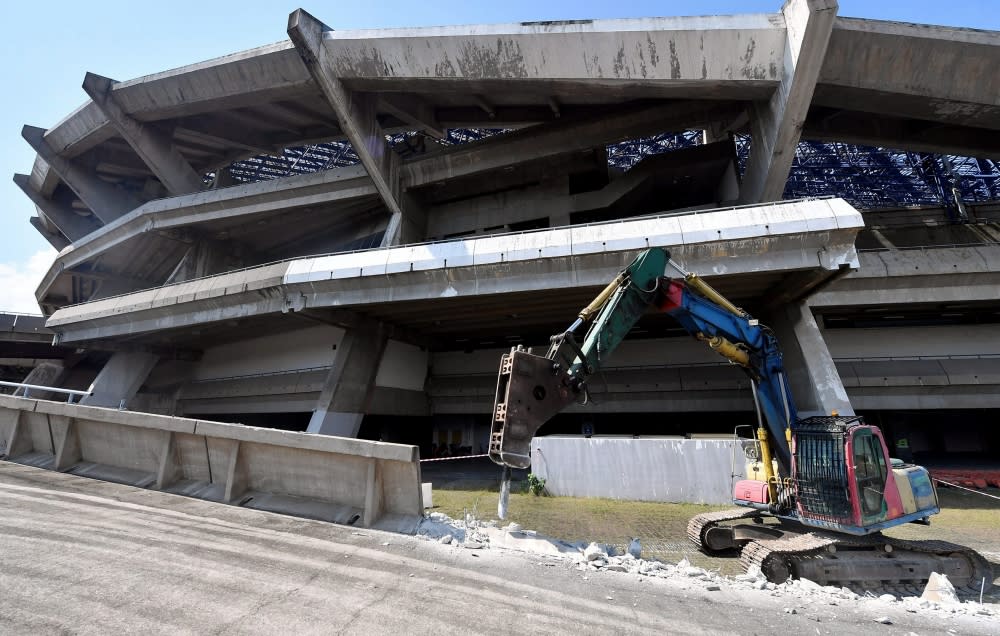
SHAH ALAM, July 5 — Whether it’s for sports or concerts, the Shah Alam Stadium holds a special place in the hearts of many Malaysians, especially the residents of Selangor where it was built.
As workers this week dismantle the plastic bleachers that have supported music and sports fans through the ages, Malay Mail takes a look at its glorious past and the reasons for its demolition.
• Malaysia’s biggest, until Bukit Jalil
Built in 1994, the Shah Alam Stadium was considered a world-class football stadium at that time.
It could seat 80,372 people, just 10,000 off from the current capacity of Wembley Stadium in London.
It was inspired by the Hajduk Split Stadium, Poljud in Split, Croatia.
The Shah Alam Stadium was the biggest stadium in Malaysia up until Stadium Sukan Bukit Jalil was built a year later in 1995, which has the capacity of 85,500.
An invitational football tournament was held at the opening of the Shah Alam Stadium that saw not only a selection of Malaysians from the Selangor on the pitch but also players from Dundee United, Bayern Munich, Leeds United, the Australian Olympic team “Olyroos”, and Flamengo, which eventually won.
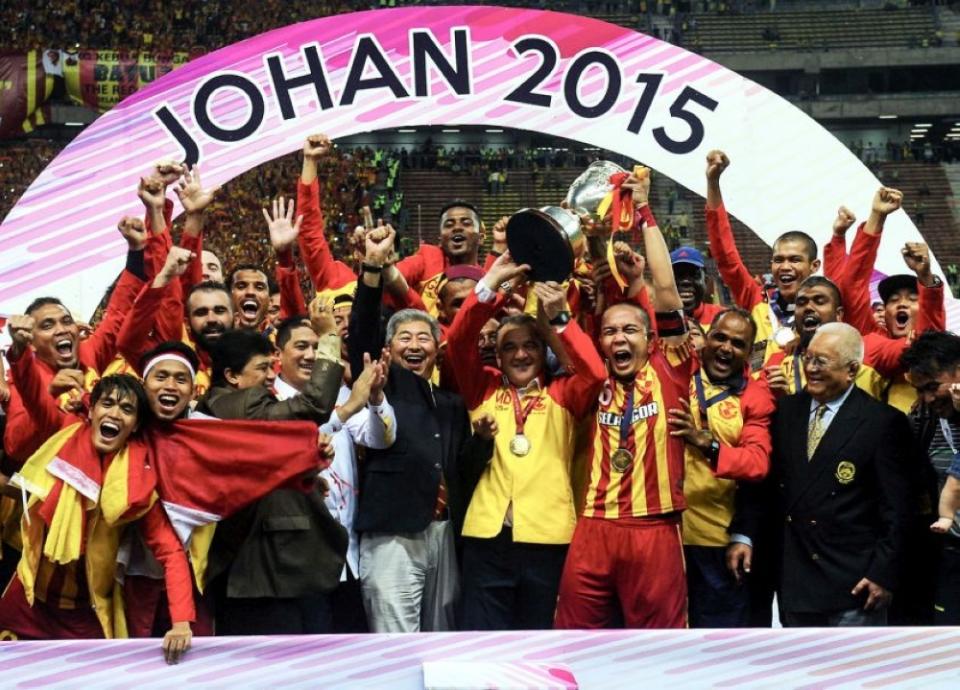
The Selangor team celebrating their 2-0 Malaysia Cup win over Kedah on December 12, 2015. — Bernama file pic
Home of the Selangor Football Club aka the Red Giants
The iconic stadium has been the home to the Selangor football team since 1994 for the Malaysian Super League and Asian Football Confederation Cup matches.
Up until rival Johor Darul Takzim’s dominance in the local league, Selangor was the biggest football team in the country.
Legendary national footballers such as Datuk Mokhtar Dahari, Datuk R. Arumugam,Tan Sri Abdul Ghani Minhat, Wong Choon Wah, Datuk Santokh Singh, Datuk Soh Chin Aun and Datuk Zainal Abidin Hassan all played for Selangor during their golden era.
An annual tournament between Selangor and the Singapore national team was popular among the Red Giants fans.
People would flock to the stadium on game day, reviving the friendly rivalry between the two teams which date back to before Malaya’s independence.
The stadium also witnessed the Selangor football team capturing their 33rd Malaysian Cup — the most in Malaysian football history.
Popular football clubs such as Barcelona, Sevilla and Queens Park Rangers have played a friendly at Shah Alam stadium.
In 1997, Malaysia hosted the 11th edition Fifa World Youth Championship, the first in the South-east Asian region.
The Shah Alam Stadium was picked as the main arena out of six cities that also hosted other sporting events.
The eventual winner for the championship was Argentina whose current national team coach Lionel Scaloni was a squad member back then.
Shah Alam Stadium's indoor complex called the Malawati stadium, was also used for some events in the 1998 Commonwealth Games.
It was also used for football matches for the SEA Games in 2017, in which the Malaysian team earned silver after losing 1-0 to Thailand, despite being the host country.
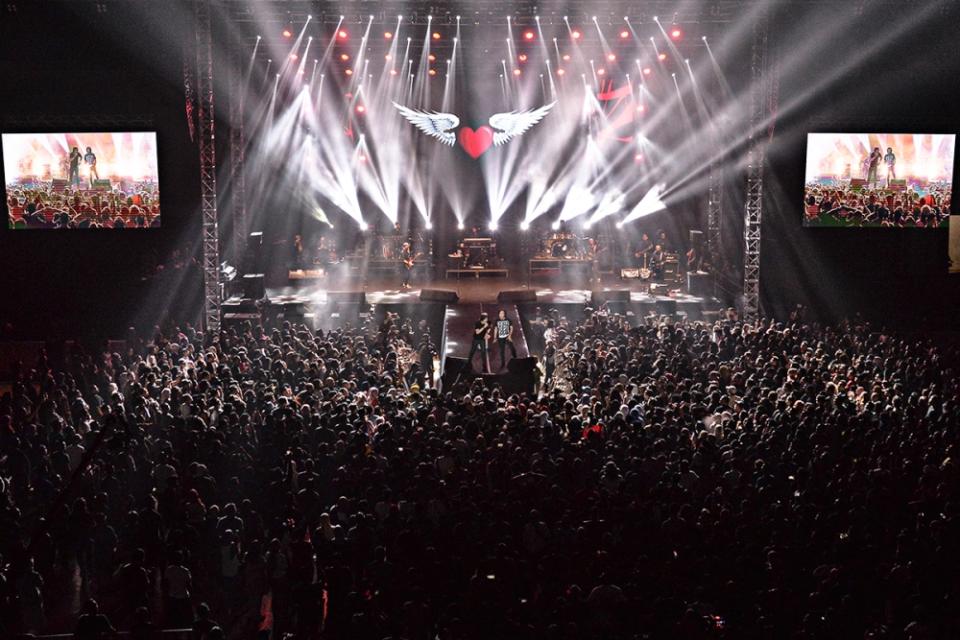
Indonesian rock band Dewa 19 held its reunion concert at the Shah Alam Stadium’s indoor arena, Malawati, on February 2, 2019. — Picture by Malay Mail/Shafwan Zaidon
Concerts
On May 4, 1995, American rock band Bon Jovi performed a concert at the Shah Alam stadium as part of their “These Days” album tour.
Malaysia was one of the 16 stops in his Asian countries including South Korea, Taiwan, Indonesia, and Singapore.
Other rock stars that performed there were the British metal band Deep Purple on May 1, 1999.
Los Angeles band Maroon 5 also graced its stage on September 20, 2012.
K-pop groups such as Blackpink also performed in the Stadium Shah Alam’s indoor arena, Malawati, back in 2019.
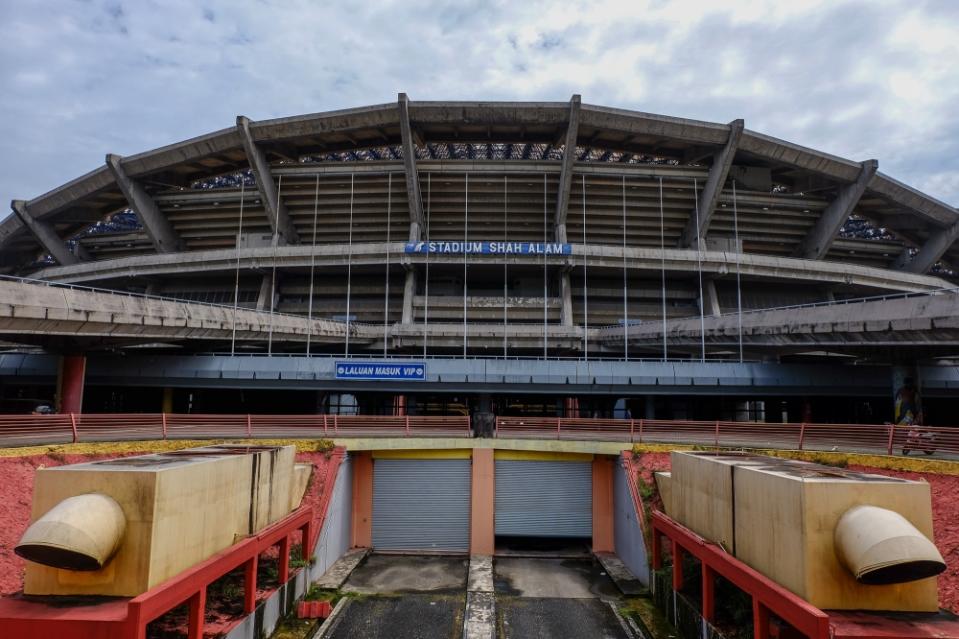
The Shah Alam Stadium facade has seen better days than pictured here on November 26, 2023. — Picture by Yusof Mat Isa
Redevelopment
After all the glitz and glamour of its early days, the Shah Alam Stadium began to fade.
The stadium’s roof panel, which was made of polycarbonate, started to crack and fall, piece by piece.
With poor upkeep, not even a repainting, added to its shabby appearance.
Despite multiple renovation attempts over the years, the Malaysian Football League announced that the dilapidated stadium may be barred from hosting the Malaysia Super League matches, due to safety reasons.
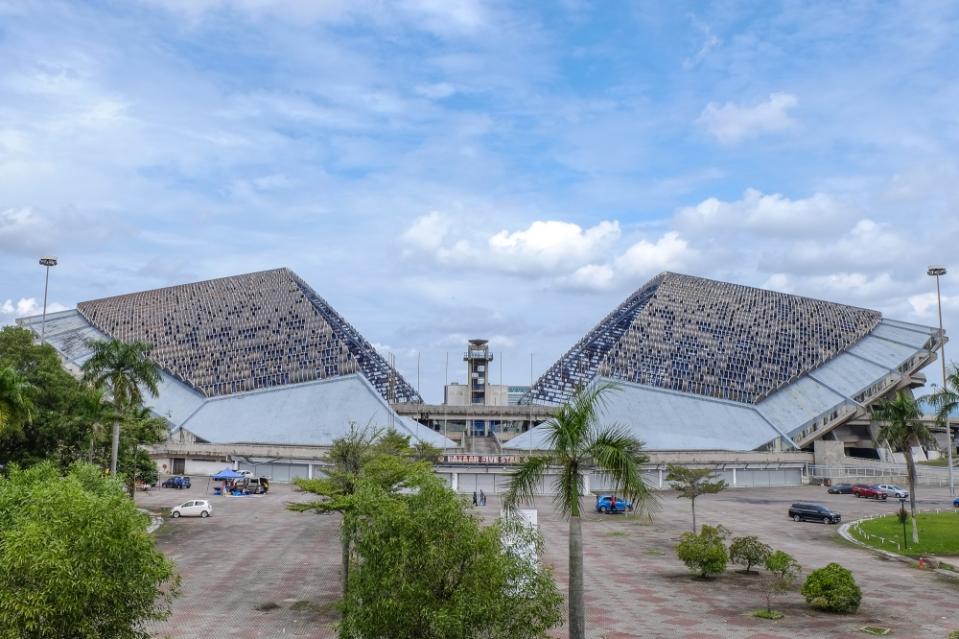
A side view of the Shah Alam Stadium inspired by the Hajduk Split Stadium in Croatia, taken on November 26, 2023. — Picture by Yusof Mat Isa
Selangor Mentri Besar Datuk Seri Amirudin Shari said repairs to the Shah Alam Stadium could cost up to RM250 million.
But in July 2022, the Selangor government submitted a planning permission application to tear down the dilapidated stadium and develop the sports complex at the same site.
Amirudin said the cost of the project, dubbed the Shah Alam Sports Complex (KSSA), will cost RM3.28 billion, which include other facilities to be developed around the complex area.
The KSSA will have a lower capacity of between 35,000 to 45,000 spectators compared to current figures.
This is because the stadium will focus solely on football matches.
The project involves three phases, and is expected to be fully completed by 2029.
The first phase, involving the demolition and reconstruction of the Shah Alam Stadium, is expected to be completed by December 2026.
The second phase, scheduled to begin in January 2027, involves a closed theatre, youth and sports wing, and recreation area.
The final phase involves the construction of an integrated terminal and hotel, expected to start between January 2028 and December 2029.



